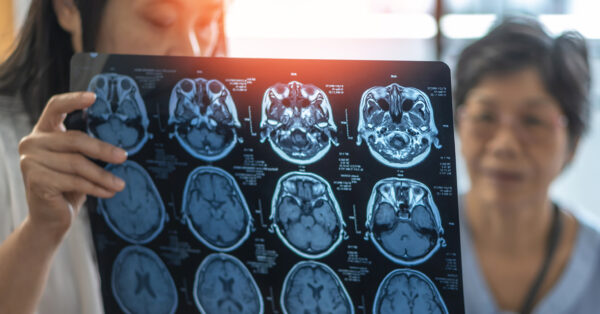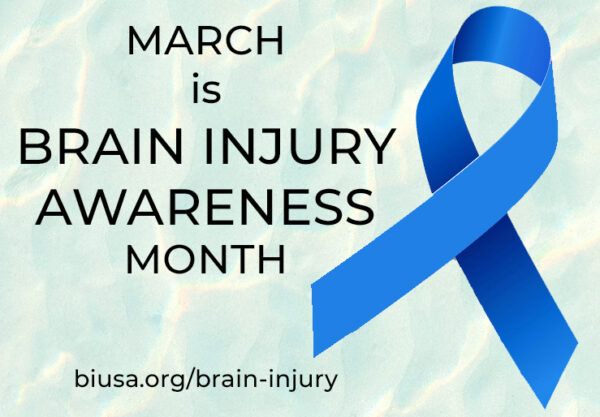Brain Injuries: More Common Than You May Think

Many people go through life not thinking much about brain injuries, concussions, or head trauma. They think you must be in a car accident, have a sports related injury, or suffer a severe head trauma to have a brain injury.
Once I saw a client at a home visit who did not have any history in the chart about brain injury or head trauma. When I asked questions, the client revealed concerns with concentration, headaches, and dizziness. Sure enough, a person might tell me they “saw stars” when they fell, but they didn’t go to a doctor because they didn’t think it was serious.
According to statistics, at least 2.8 million people sustain a brain injury each year in the United States, and there are groups at higher risk for injury. Racial and ethnic minorities, people who experience homelessness, people in correctional and detention facilities, and people who survive intimate partner violence are more likely to be affected.
Concussions happen! Sudden bumps, jolts, or trauma that cause the brain to bounce back and forth in the skull can cause a brain injury.

March is Brain Injury Awareness Month. Learn more on the Brain Injury Association of America website.
Some people who have concussions don’t have obvious symptoms; however, common symptoms include headache, migraine, dizziness, nausea, ringing in the ears, and vision problems. Other symptoms may include sleeping difficulties, feelings of anxiety, sadness, and having a slower than normal reaction time.
It’s not just professional athletes at risk of brain injury! Older adults are at higher risk for concussions due to increased risk for falls. Head trauma and brain injuries are serious and can lead to hospitalizations; in some cases, death. It is important to note that sometimes there are delayed symptoms after a head injury. Sometimes the most intense symptoms occur a day later.
There are two types of brain injuries—traumatic and non-traumatic:
- Traumatic brain injury (or TBI) is when the injury causes your brain to function differently. This happens when there is an external force to your head, like when you hit your head during a fall, or something strikes your head, like a blunt object.
- Non-traumatic brain injury can happen due to an illness, being oxygen deprived, metabolic disorders, brain aneurysm, cardiac arrest, and near-drowning experiences.
Brain injuries can happen to anyone, anywhere, at any time. Consider taking steps to ensure your safety:
- Always wear a seat belt when in a vehicle.
- Do not drive when under the influence of drugs, alcohol, or sedating medications.
- Take precautions to reduce slip, trip, and fall hazards in your home, including removing electrical cords and scatter rugs. Keep your environment well lit.
- Do strength and balance exercises to keep your legs strong and to improve your balance.
- Have your medications reviewed regularly by your doctor or pharmacist.
- Have your eyes checked regularly.
Consider the 4 “Ms” of the Age-Friendly Health System when addressing brain injury awareness:
- What Matters—the health outcome and goals that align with your preferences and choices.
- Medications—knowing which medication(s) you take, their side effects, how they affect your brain health, and how they place you at greater risk for falls.
- Mentation (Mind and Mood)—preventing, identifying, treating, and managing depression, dementia and delirium across care settings.
- Mobility—taking steps to improve your balance and strength to reduce fall risk and/or injuries.
March is Brain Injury Awareness Month. Please share this information with friends and family!
 Contributor Mary Pat O’Leary, RN, BSN is a senior planner at Aging and Disability Services, the Area Agency on Aging for Seattle & King County. She thanks Dr. Carrie Rubenstein, Swedish Family Medicine First Hill Geriatric Medicine, for contributing to and reviewing this article, and thanks Gloria Kraegel, Brain Energy Support Team (BEST) for reviewing the article and supporting and advocating for those living with brain injuries.
Contributor Mary Pat O’Leary, RN, BSN is a senior planner at Aging and Disability Services, the Area Agency on Aging for Seattle & King County. She thanks Dr. Carrie Rubenstein, Swedish Family Medicine First Hill Geriatric Medicine, for contributing to and reviewing this article, and thanks Gloria Kraegel, Brain Energy Support Team (BEST) for reviewing the article and supporting and advocating for those living with brain injuries.
![AgeWise King County [logo]](https://www.agewisekingcounty.org/wp-content/themes/agewisekingcounty/images/logo.png)